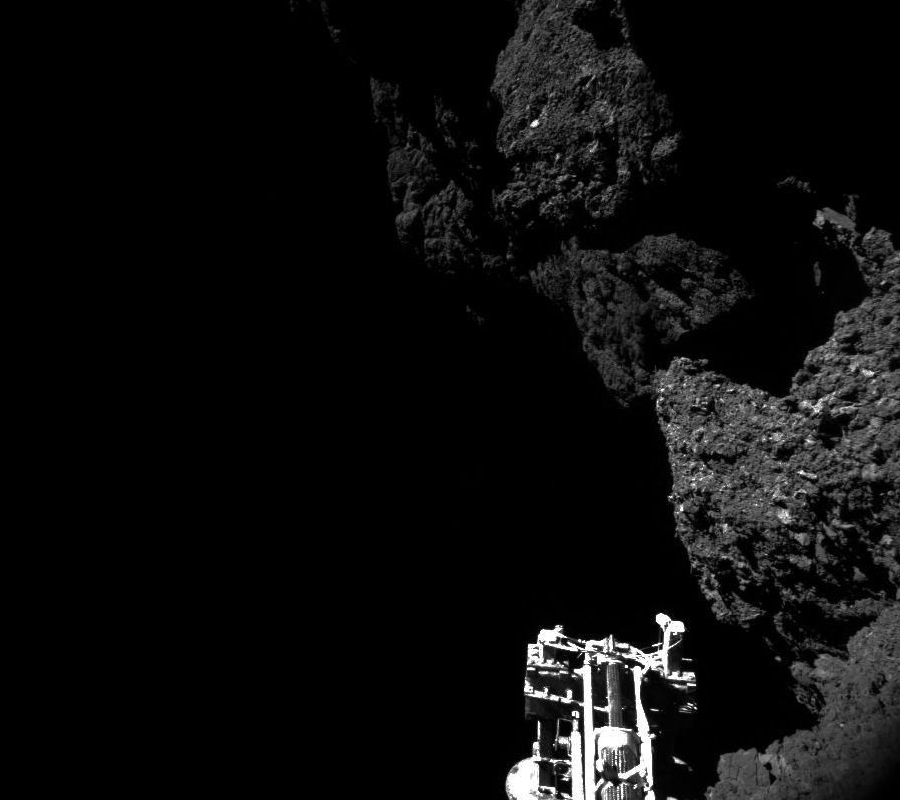According to the European Space Agency (ESA), its Rosetta spacecraft has just found the Agency’s Philae lander, which lost contact with the mission in 2014 during a landing attempt. Ever since, scientists had been trying to find the missing lander, with little success, until Friday.
Philae was found on the comet 67P/Churyumov-Gerasimenko, where it was supposed to land before crashing. Rosetta used its incredibly high-resolution camera to find Philae in the midst of a pile of rocks that were in a shadowed part of the comet. The spacecraft had to fly closely along the comet. By the time it found the lander it was just 1.7 miles above its surface.


The missing Philae lander
The fact that Philae unluckily landed on a permanently shadowed part of the comet explains why its solar-powered battery died so quickly, which was the main reason the Agency lost contact with the lander.
The discovery could not come at a better time, since Rosetta has only one month of solar energy before steering away from the sun, finishing the trail-blazing mission and ending with a terminal descent to the comet’s surface.


According to Cecilia Tubiana, from the OSIRIS camera team “with only a month left of the Rosetta mission, we are so happy to have finally imaged Philae, and to see it in such amazing detail.” Tubiana was the first member of the team to see the lander through Rosetta’s camera after they were downlinked Sunday.
Philae’s failed landing attempt
Rosetta released Philae on November 12, 2014, with the aim of studying the surface of the comet 67P/Churyumov-Gerasimenko. According to the Agency’s analysis, while trying to land, the spacecraft “bounced” twice off the surface, landing two hours later on its side.
The images that reached Earth through its camera showed that it had crashed on a shadowed, rocky area. Three days later, without sun rays to recharge its system, the lander’s batteries died, sending Philae into hibernation.
Although in June and July last year the lander tried to communicate, the new images show that the cliff where it crashed was a permanently shadowed part of the comet. As stated by Patrick Martin, the Agency’s Rosetta mission manager, the team had already lost hope in finding Philae.
The discovery, as said by Rosetta’s project scientist, Matt Taylor, would provide the team with enough information to “put Philae’s three days of science into proper context.” This comment arises from the fact that Philae had found traces of organic molecules on the comet’s surface before its battery died.
This was the primary objective of the lander’s mission, since at the time scientists believed the answer to how the solar system and life on Earth originated might be on that comet.
Nonetheless, in this last couple of years, other discoveries have led scientists to conclude that the Earth’s water did not come from comets such as the 67P/Churyumov-Gerasimenko.
Source: CBS News
